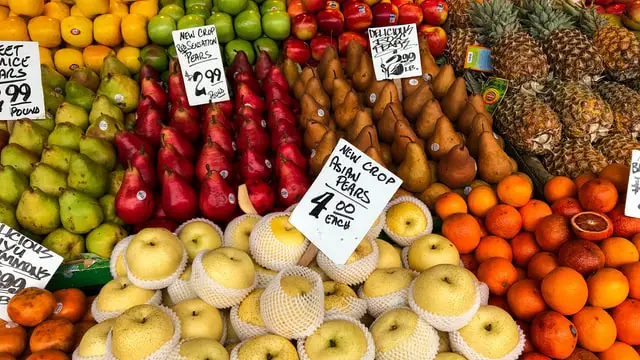Unit Price Vs Retail Price – How do you choose between these two concepts which are often confused with each other?
The Unit Price represents the price of an individual unit in a product, while the Retail Price represents the total price when considering all units in that product.
Unit Prices can be expressed in terms of time (minutes, hours), distance (miles, kilometers), or weight (ounces, pounds or kilos).
Unit pricing is common in grocery stores because it allows customers to compare items based on a common unit of measurement.
The Retail Price, on the other hand, tells you how much you will pay to buy the product on display. Unfortunately, it is not a good measure to compare the prices of different products.
In this article, we’ll define both terms and resolve the question – Unit Price Vs Retail Price: Which one do you look at while making purchase decisions?

(Image source)
Unit Price: A definition
The Unit Price of a product is the price per standard unit of that product.
Unit Price is calculated by dividing the Total Price of a product by the Number of Units that exist in the product.
Unit Prices are a great way of comparing prices of similar products to decide which one offers the best value for money.
If you’d like to know more, here’s a brief guide on Unit Prices. It includes real-world examples and calculations.
Retail Price: A definition
The Retail Price of a product is the price you pay when you purchase the product.
It is called a Retail Price because this is the price most commonly seen on price tags at retail stores.
The Retail Price includes the price at which the retailer acquired the product plus their mark-up. The mark-up typically includes additional costs incurred by the retailer after having acquired the product plus their profit.
Unit Price Vs Retail Price
The mathematical connection between Retail Price and Unit Price is as follows:
Unit Price = Retail Price / Total No. of Units
Let’s say that the price tag of a 24 oz. bottle of tomato sauce is $2.15.
Then, we can say:
Retail Price = $2.15
The Unit = 1 oz.
Total No. of Units = 24
Unit Price = Retail Price / Total No. of Units = $2.15 / 24
Unit Price = 8.3 cents / oz
Unit & Retail Prices that update automatically
We’ve now seen that using Unit Prices to compare the prices of products works best because we can compare two products using a single metric.
But what if Retail Prices and therefore Unit Prices were to change automatically based on external conditions like the product’s expiration date or the buyer’s behavior?
This sort of Dynamic Pricing will change the way we shop and compare prices while in a store.
According to this story by Fast Company, the Italian Supermarket store “Iper”, in one of its stores in Milan, is using electronic price tags to lower the prices of products as these products get closer to their expiration dates.
The technology is built by an Israeli start-up, Wasteless, and it uses a pricing engine to process stock data to dynamically change the price of products so that each product is sold at the most optimal price.
Such new technologies will change the way we shop and how we use Retail and Unit Prices to make our purchasing decisions.
Summary
- The Unit Price and the Retail Price offer two different ways of looking at a product’s pricing.
- The Retail Price tells us how much we would pay if we were to purchase the product that is in front of us.
- The Unit Price tells us how much a unit of that product costs and we can use Unit Prices to compare similar products.
- The Retail Price of a product usually includes the cost to the retailer to acquire the product, plus the retailer’s mark-up.
- Retail Price and Unit Price are mathematically related.
Unit Price = Retail Price / No. of Units. - New technologies which dynamically change the price of products based on environmental factors will change how we use Unit Prices and Retail Prices to make shopping decisions.